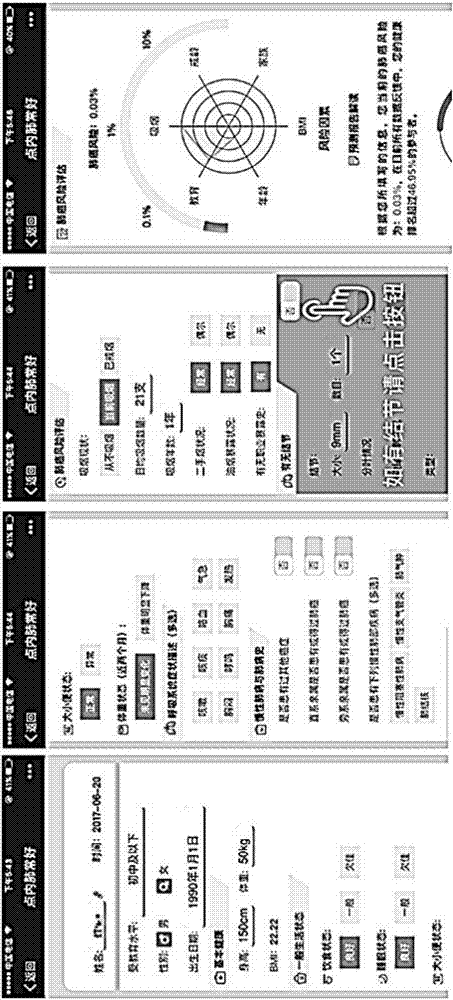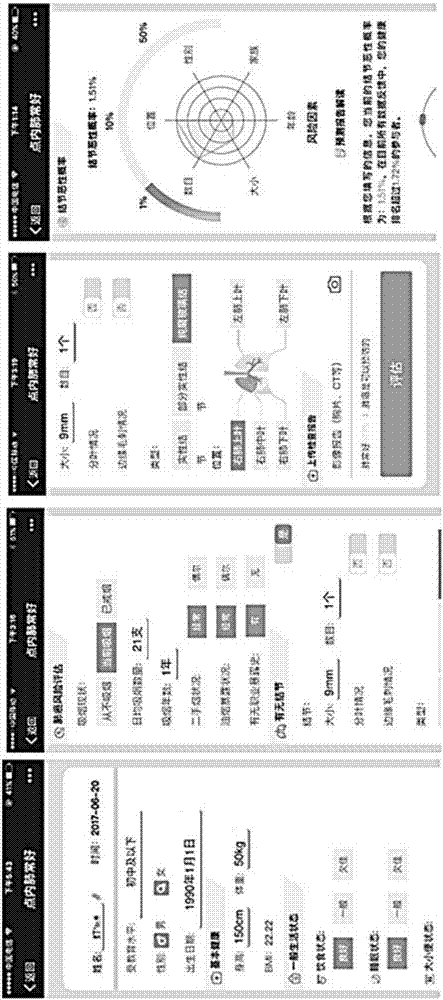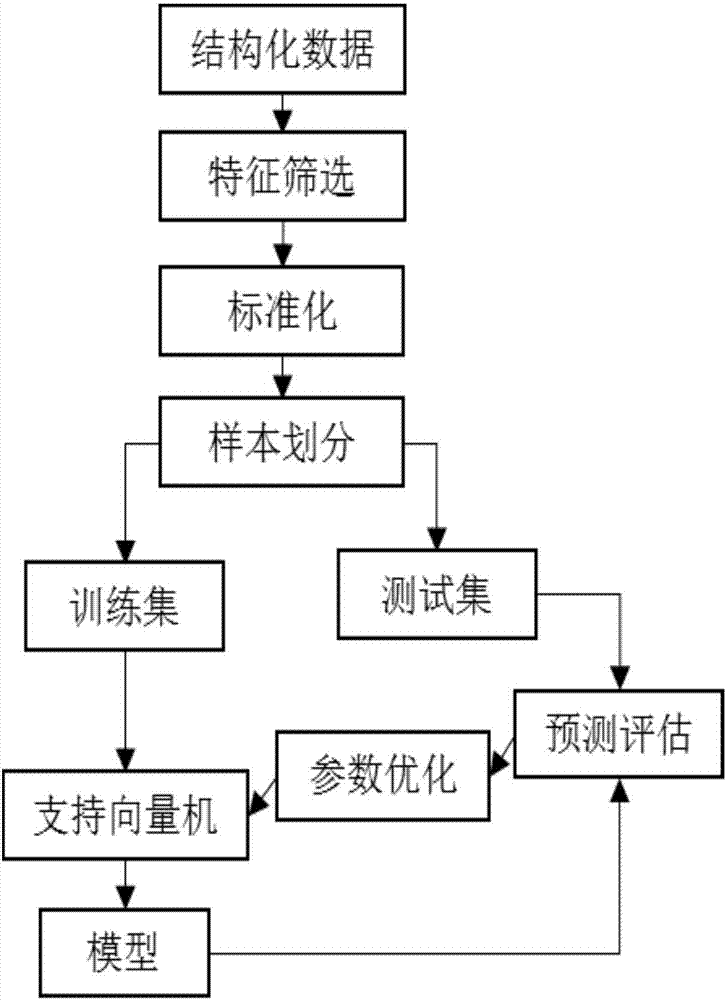Method and system for assisting in screening lung cancer based on artificial intelligence
A technology of artificial intelligence and lung cancer, applied in the medical and health field, can solve the problems of low degree of digitalization of medical and health information, lack of effective management and integration of data, and difficulty in effective use of massive data
- Summary
- Abstract
- Description
- Claims
- Application Information
AI Technical Summary
Problems solved by technology
Method used
Image
Examples
Embodiment Construction
[0014] like figure 1 As shown, in this embodiment, by generating a model for distinguishing lung cancer and a model for assessing benign and malignant pulmonary nodules, the basic information, basic health information, general living conditions, current respiratory symptoms, chronic diseases and lung diseases of the object are collected in real time during online detection. History and smoking status, and the risk value of cancer and the probability of malignancy of nodules were detected through the identification model of lung cancer and the evaluation model of benign and malignant pulmonary nodules.
[0015] The model for identifying lung cancer first establishes case data and initializes the structure, collects structured case data information of lung cancer patients and healthy people, and performs machine learning on the obtained training data set after feature extraction and feature data standardization. A lung cancer model is identified through training.
[0016] The c...
PUM
 Login to View More
Login to View More Abstract
Description
Claims
Application Information
 Login to View More
Login to View More - R&D
- Intellectual Property
- Life Sciences
- Materials
- Tech Scout
- Unparalleled Data Quality
- Higher Quality Content
- 60% Fewer Hallucinations
Browse by: Latest US Patents, China's latest patents, Technical Efficacy Thesaurus, Application Domain, Technology Topic, Popular Technical Reports.
© 2025 PatSnap. All rights reserved.Legal|Privacy policy|Modern Slavery Act Transparency Statement|Sitemap|About US| Contact US: help@patsnap.com



